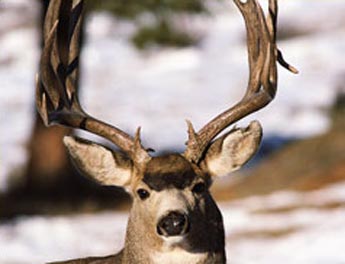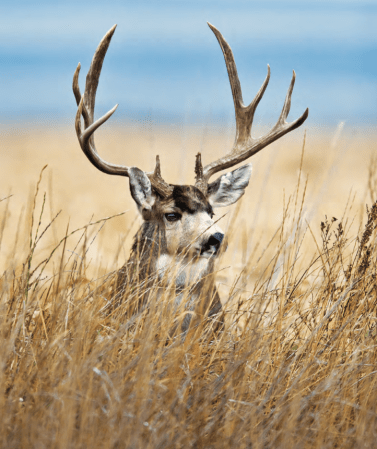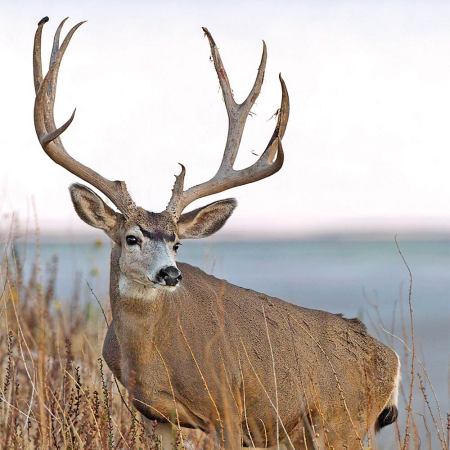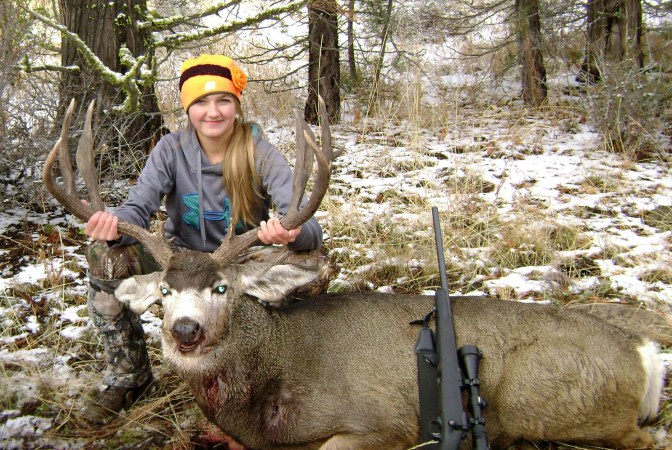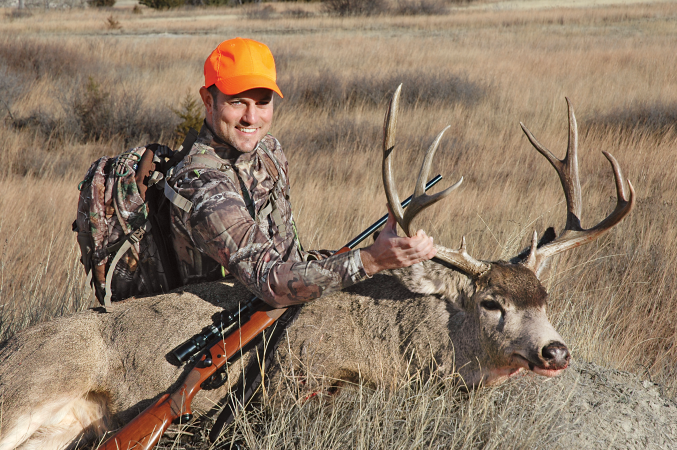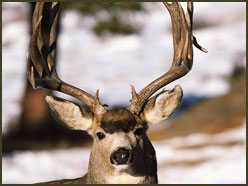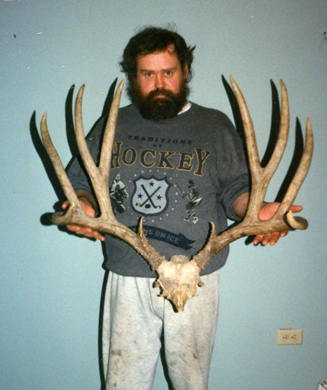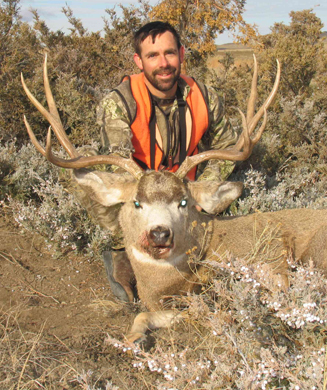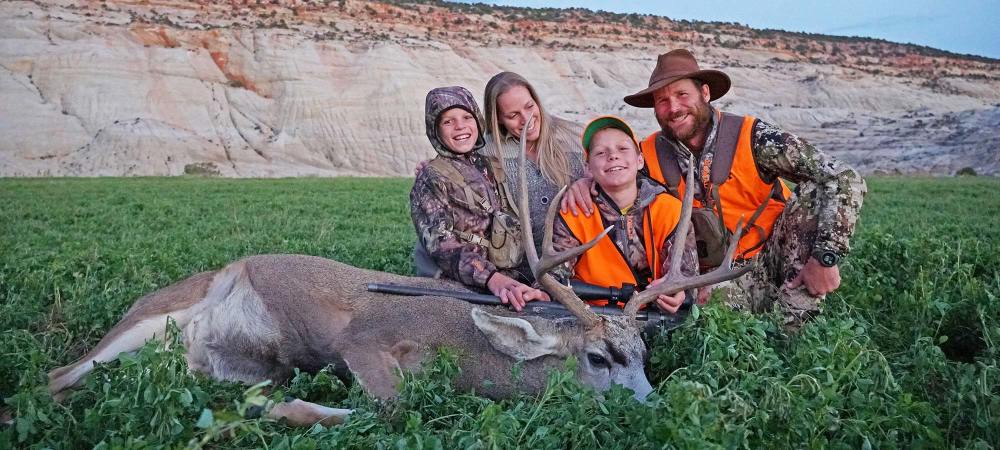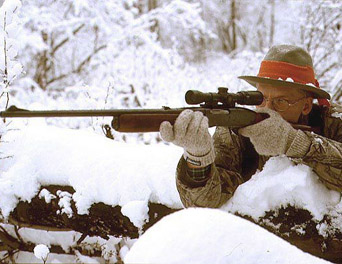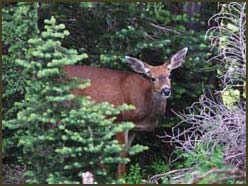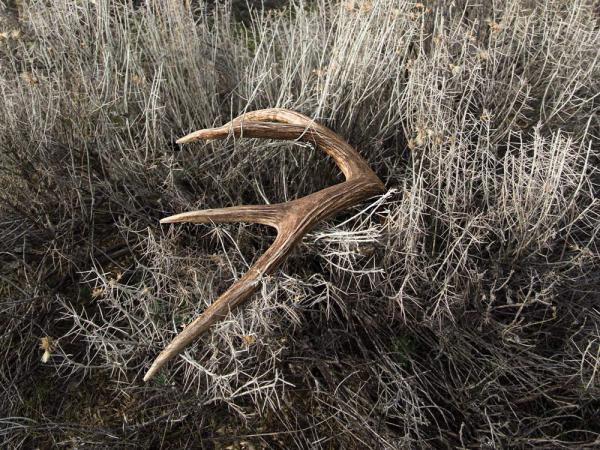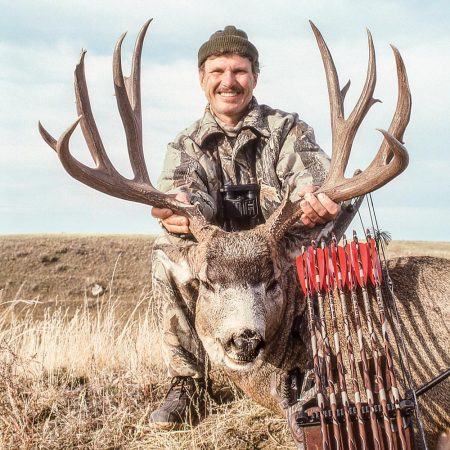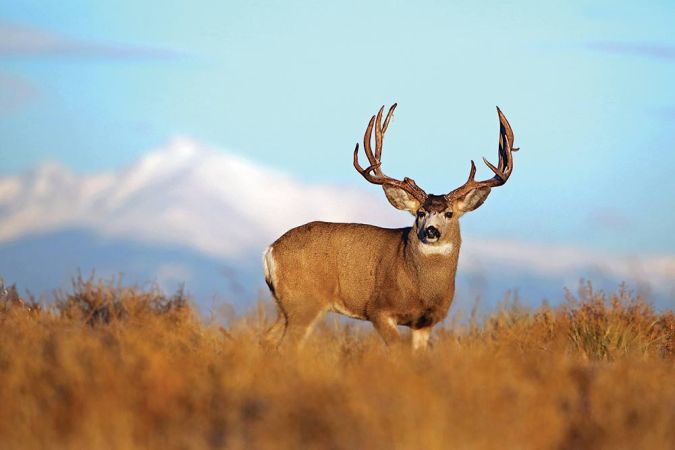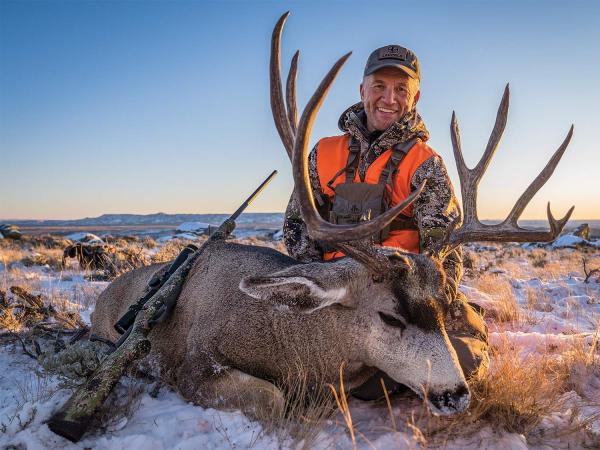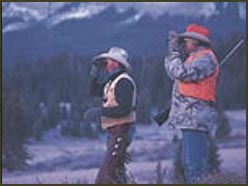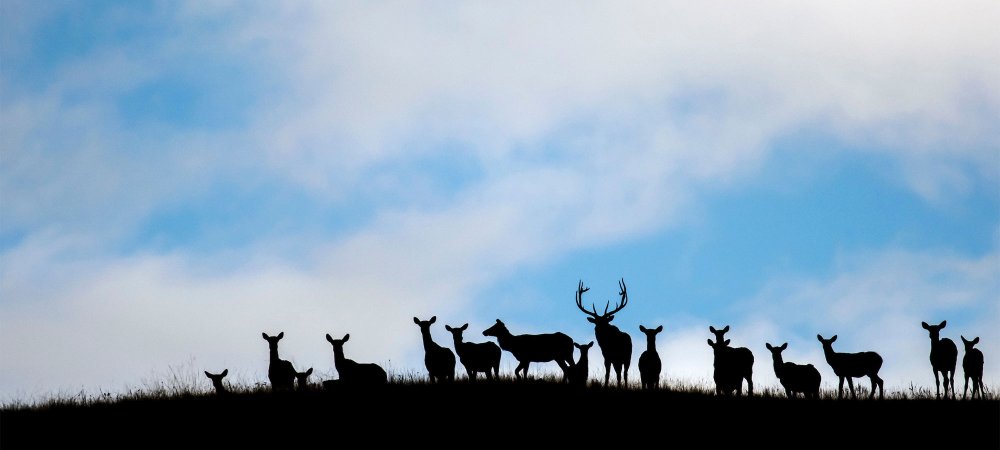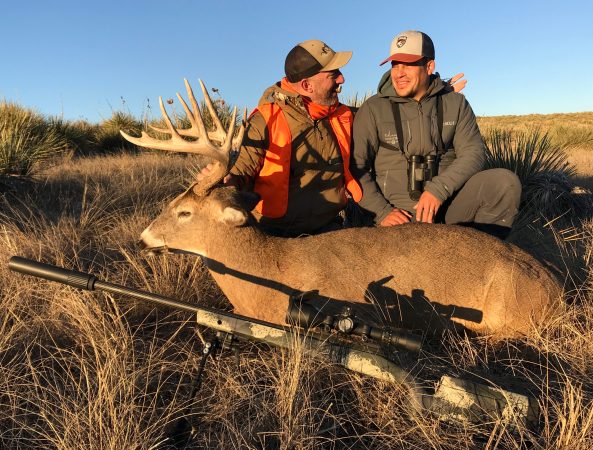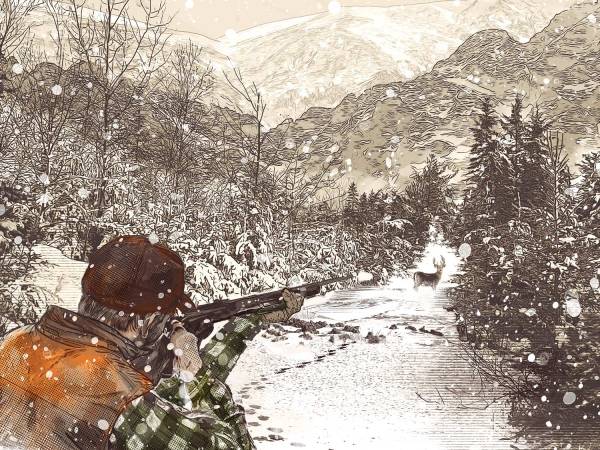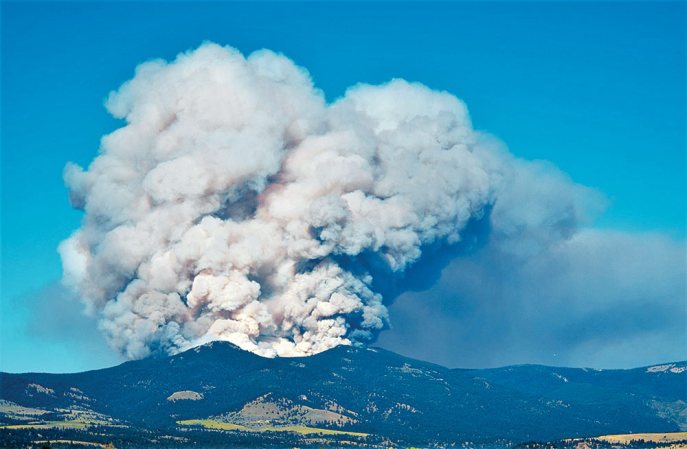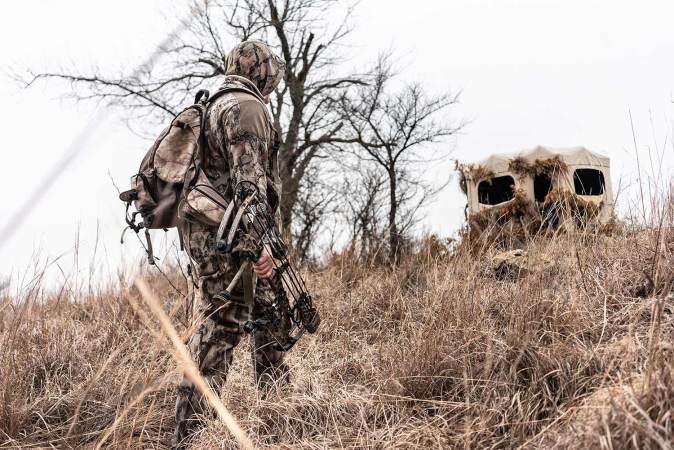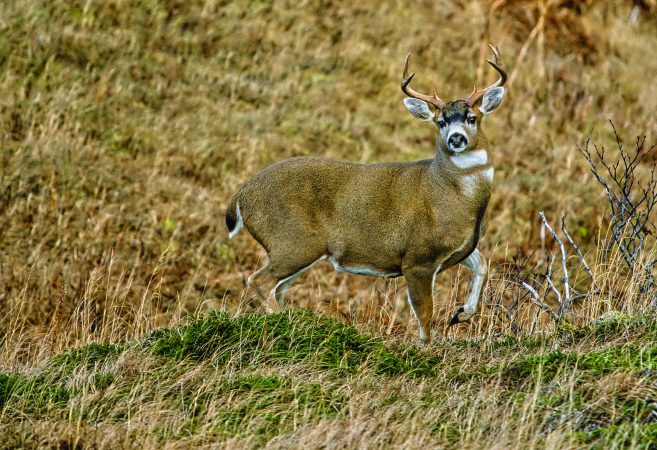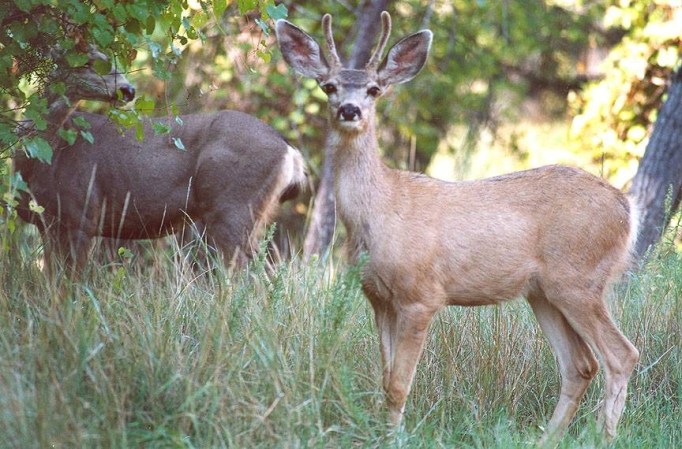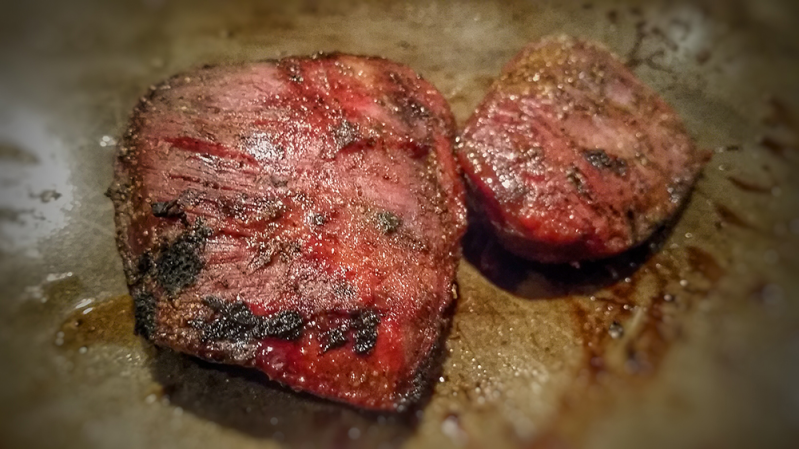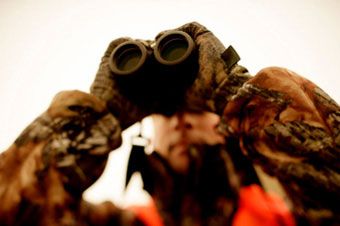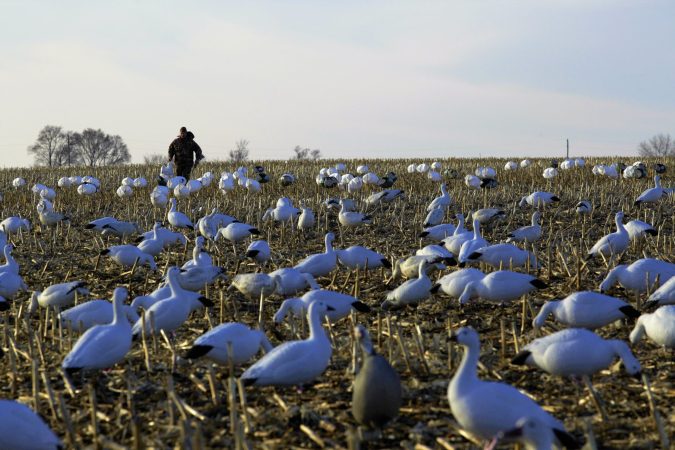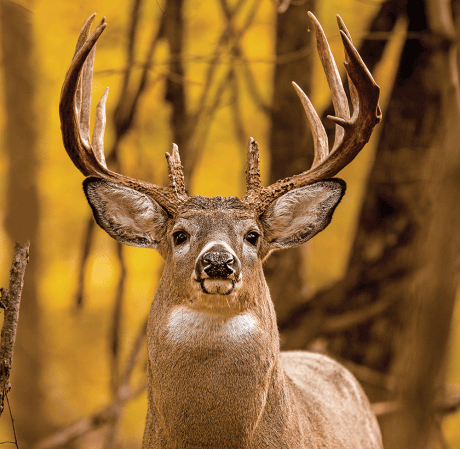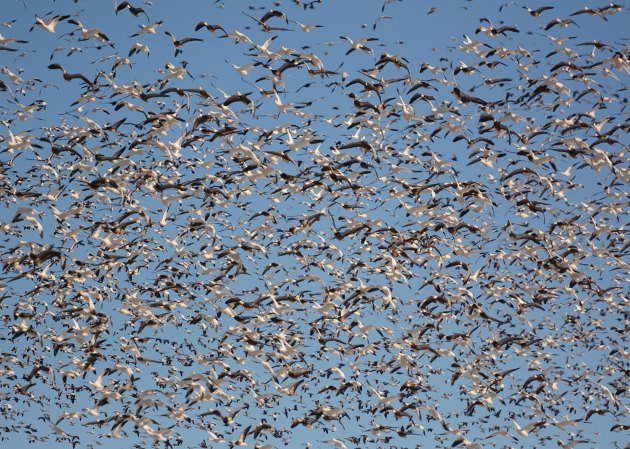I was splitting wood outside my house when a vehicle pulled up in my driveway. Three men got out and introduced themselves as nonresident hunters from Ohio.
“Where are all the mule deer?” one of them asked as they approached. The men had been hunting for three days and had seen only a small forked-horn buck and six does. To add to the puzzle, one of the men had hunted in my area the year before and he and his pal had each taken nice four-point bucks the first day they hunted.
I pointed to the high peaks around me and told the strangers that the deer were up there. In fact, the muleys hadn’t reached the lower elevations where more hunters could get to them because there just hadn’t been enough snow to kick them down. I advised the hunters that unless they were willing to hire a guide and hunt in the remote backcountry, or were willing to try it themselves (Wyoming nonresidents must have guides in wilderness areas), their chances of finding bucks were slim. I suggested that they try for whitetails around nearby farmlands, since the weather over the next few days promised to be balmy and bright.
They went their way and I returned to my wood splitting. As I chopped, I reflected on our meeting and hoped that they took my advice and went after whitetails. Otherwise, they were just wasting time and money chasing mule deer that weren’t there.
Making Their Move
I live in the mountains of northwest Wyoming, in a region where mule deer are high-country residents in the summer and early fall. Each year, usually around the first of November, deer appear almost overnight after a snow in the upper elevations. I start to see so many muleys that it’s as if somebody left a gate open somewhere. Deer begin showing up in herds of a dozen or more; within a few weeks there might be upward of a thousand in my valley, feeding in the fields or sagebrush. They stay in the low country until late May or early June and then disappear again, almost as if on cue. From June until November I’ll do well to spot a single muley in my neighborhood.
The reason that mule deer exit the upper elevations is simple: Deep snow covers their food, so they must migrate down out of the mountains where forage is available. The same is true with other big-game species, such as bighorn sheep and elk. Yet muleys don’t necessarily head for the very bottom of the valleys; they might hole up in basins or mountain pockets where there’s enough food to sustain them through the winter.
My pals and I have found shed antlers in places that surprised us, including south-facing high slopes and windswept ridges that are at least 2,000 feet above the valley. It proved that bucks were there most of the winter, since sheds are normally dropped in January and February. But the majority of the deer near us, including some exceptional bucks, wintered in very low elevations.
Winter ranges are vital to mule deer. Without good forage, entire herds will perish during a severe snowy season. During the worst winters over the last 35 years, I’ve personally observed hundreds of dead deer in one small area, and more than a thousand carcasses over a larger area. Wholesale starvation among mule deer is a fact of life during bad winters of prolonged cold and deep snow.
Food and Cover
Because winter ranges are so critical, wildlife agencies have mapped them well. Efforts are made to protect such places from habitat destruction. Where possible, habitat improvement projects receive the highest priority. Because winter ranges are so well-documented, it’s easy to learn their locations, which is a good starting point for late-season hunters looking for places that concentrate mule deer. State wildlife agencies and federal agencies such as the U.S. Forest Service and Bureau of Land Management have maps that show wintering areas.
Some of the best winter ranges are on private land. Deer head for cultivated fields as soon as they come down from the high country. Unless you’re hunting with an outfitter who has permission to hunt private lands, or you’re in a group that has property leased, you’ll meet very few landowners willing to grant permission to hunt in their fields.
There is a silver lining, however; state or federal lands surround many farms. With an updated map and some legwork, you can find public lands near game-rich areas where deer can be hunted. Typically, muleys will bed on the outskirts of the fields where they find cover that protects them from intruders and harsh winter weather.
Deer usually travel to fields late in the afternoon and feed periodically during the night before returning to bedding areas early in the morning. As many hunters–including me–have learned the hard way, big bucks might not move until dark and could be gone from the fields before morning light. The older bucks are mainly nocturnal and seldom seen in the daylight. This has been proven to my satisfaction on numerous occasions at night when, while driving, I’ve spotted big bucks in my headlights crossing roads and heading for a field. Those same bucks are nowhere to be seen in the daytime.
Old Bucks Are Night Owls
You can forget about ambushing the older, warier bucks by waiting for them to leave the fields at first shooting light. You’d be wasting your time, since the bucks would have already gone. Instead, go to their likely bedding areas a mile or two from a field and set up at least an hour before first light. Then wait quietly and get your binocular ready to scan some terrain. If you’re lucky, you might intercept a nice buck making its way to cover.
Conversely, don’t expect to get a shot at a buck heading toward a field in late afternoon. Here again, the old boys likely will be tardy and never approach anywhere close to the field until after dark. Remember, they might have bedded down at least a mile away–perhaps up to three miles away, depending on the availability of thick cover–and they’re not going to venture out into the daylight until they sense that it’s safe.
If you’re in good shape and have the right gear, you can hike up to the deer in the mountains before they come down, either to feed or to winter. Sometimes they’ll hang up a mile or two above winter ranges, waiting for snow. If you’re lucky and snow cooperates, you might run into a full-fledged migration where dozens of deer walk purposefully down well-used trails. I’ve been fortunate enough to witness that phenomenon half a dozen times; it’s an impressive sight.
In areas where does and fawns arrive in winter ranges even when there isn’t yet much snow up high, bucks have a good reason to join them. The rut begins in early November and builds to a peak around the third week of the month. Consequently, it’s the gradual movement of does toward the valleys that causes bucks to move down too, rather than the advent of the snow season.
Whatever the reason for the bucks’ travels, if you’re set up on a good vantage point and can glass the surrounding countryside with a good binocular, you might spot a trophy buck slipping downhill in late afternoon. Whether you have enough light left to move to within shooting range of the buck is a different matter.
If you are hunting during the mule deer rut, it helps to understand some of the basic ground rules. Whereas whitetail bucks use scrapes and rubs as part of their breeding display, muleys don’t make scrapes and their rubs don’t have the same significance as those of whitetails. Whitetail bucks also travel extensively in search of a doe or two, while muley bucks will hang out continually with a herd of does, breeding them as they come into estrus. If you see a gang of does in a field, or moving toward one, the chances are good that there’s a buck close by. He might not show his face until after dark, but there’s a possibility that he might be on the heels of the does, especially if one of the bunch is in estrus or if there is a competitive buck nearby.
However, don’t be too quick to shoot the buck that appears to be guarding a harem of milling does. Often a much bigger dominant buck will be lying close by, showing himself only when a doe is in heat.
The Perfect Combination
Fierce winter weather sometimes compels muleys to migrate for miles to find enough food to sustain them. Some studies show that they’ll travel at least 100 miles. If they must move a long distance to their winter range, it takes less snow to coax them out of the upper elevations, since it takes longer to make the trek. Conversely, deer that migrate only a few miles don’t need a head start and will linger until they can no longer find adequate forage.
In some states and hunting units, hunting seasons might end in late October or early November. Often this isn’t late enough to correspond with muley migrations triggered by high-country snow. Some states, such as Montana, have general seasons that run into late November, ensuring that the rut will be on and snow will likely be falling when hunters are afield.
Before you schedule a hunt for high-country mule deer, be sure you check out the local migration factors. Have an alternate hunting plan in mind in case it’s a mild fall and muleys haven’t yet moved where you will hunt.
If you get lucky and snow conditions are right, however, be prepared for a hunt to remember and recount for the rest of your life.
Gun-Cleaning to Go
If you keep your gun-cleaning supplies in a cardboard box on a shelf in the garage, maybe Santa will notice and bring you a better and safer storage system.
Plano Molding’s Shooter’s Case (shown) will hold most of the solvents, sprays, patches, rod accessories, rags and wiping cloths you use to clean and service your hunting guns. Clip-on yokes fit onto the top of the case and hold a gun in place while you swab its barrel and wipe it down. The cushioned carry grips make it easier to tote to hunting camp and back home again. The case is made of an oil- and solvent-resistant plastic and wears a subdued camouflage pattern. (About $20; 800-874-6905; www.planomolding.com)

